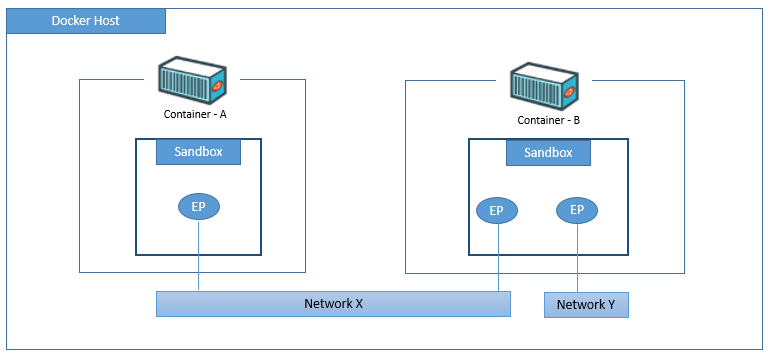
- #Docker for mac network host mode how to
- #Docker for mac network host mode drivers
- #Docker for mac network host mode driver
- #Docker for mac network host mode upgrade
No containers are currently connected to the network.
#Docker for mac network host mode driver
It uses default IPAM driver with one IPv4 and (optionally) one IPv6 subnet. You have just created a network that uses macvlan driver on parent interface eth0. Verify that the macvlan0 network was created: # docker network lsĬheck the network details: # docker network inspect macvlan0 Docker’s IPAM driver is not aware of the IP addresses already in use by external DHCP clients, leading to possible IP address conflicts in the subnet. Warning: You should not have an external DHCP server assigning IP addresses for the same subnet you have configured at the creation of the macvlan network. If you absolutely need your containers to acquire IP data from the DHCP server, macvlan driver is currently not the solution you are looking for. For the time being, there is no IPAM driver that would communicate with external DHCP server, so you need to rely on Docker’s default IPAM driver for container IP address and settings configuration.Ĭontainers use host’s DNS settings by default, so there is no need to configure DNS servers. On network creation, the user can specify which IPAM driver libnetwork needs to use for the network’s IP address management.
#Docker for mac network host mode drivers
Libnetwork has a default, built-in IPAM driver and allows third party IPAM drivers to be dynamically plugged. Docker controls the IP address assignment for network and endpoint interfaces via the IPAM driver(s). Why do you have to configure both 元 subnet and default gateway if macvlan promises to deliver an L2 network? Surely IP configuration of the containers in the macvlan network is dealt separately, either with the static configuration or by the external DHCP server? Inet6 fe80::baae:deff:fead:beef/64 scope link Įth0 is up & running, it has both IPv4 and IPv6 address, so you’re good to go.Ĭreate a new macvlan network called macvlan0. You need to check if physical interface is up & running: # ip addr | grep 'mtu|inet'Ģ: eth0: mtu 1500 qdisc pfifo_fast state UP group default qlen 1000 List them with: # docker network lsĭocker macvlan network connects container interfaces with a parent, physical interface. sudo suīy default docker comes with some of the networks preconfigured. If you have no desire or means to provide native IPv6 connectivity, simply omit all IPv6 configurations which I kindly marked in italics.įirst, make sure you’re a root or have superuser permissions. Macvlan bridge mode allows you to configure the following topology:īeing IPv6 aware, all the configuration examples are dual-stack. While there are multiple macvlan modes, Docker macvlan driver only supports macvlan bridge mode.

You should be fine with your updated Ubuntu.
#Docker for mac network host mode upgrade
If you’re running RHEL (CentoOS, Scientific Linux, …) 6, you’re out of luck, upgrade to RHEL 7. You can check your kernel version with uname -r. Last but not least, macvlan driver requires Linux Kernel 3.9 or greater. If you are looking for a production ready solution to connected your container into a physical Layer 2 network, you should stick to pipework for the time being.
#Docker for mac network host mode how to
You can find more info on how to use the experimental build here. Important: As of Docker 1.11 macvlan network driver is part of Docker’s experimental build and is not available in the production release.


If you are looking for a different network connection, refer to my docker network drivers post.īefore I begin, you should check some basics on what macvlan is, why it is a better alternative to a linux bridge and how it compares with ipvlan. You can connect the container into a physical Layer 2 network by using macvlan driver. If you are looking for a way to bridge the container into a physical network, you have come to the right place. Docker takes a slightly different approach with its network drivers, confusing new users which are familiar with general terms used by other virtualization products.


 0 kommentar(er)
0 kommentar(er)
